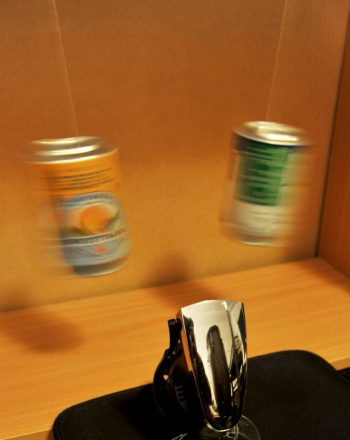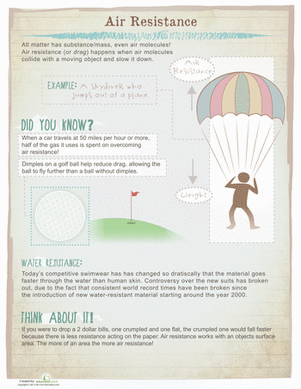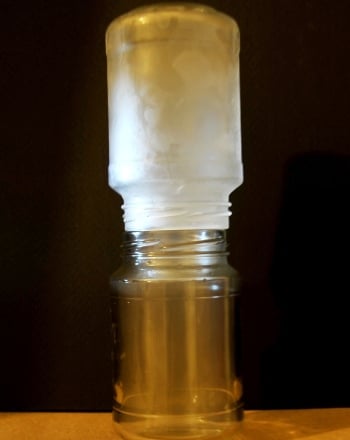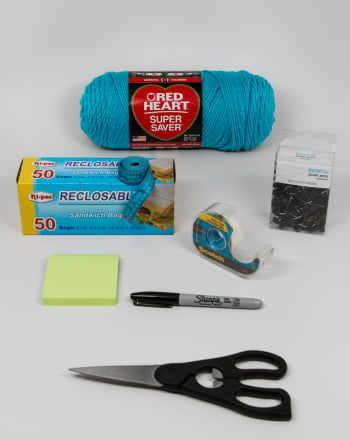Activity
Air Particle Experiment
If your child has questions about air pollution or air particles, this science experiment could clear the air! This easy at-home experiment is a great way to "see" science.
What You Need:
- 2 white index cards
- Petroleum jelly or double sided invisible tape
- Marker or pencil
- Rock
- Magnifying glass
What You Do:
- Most science experiments start with a question.; Which has more particles, indoor or outdoor air?
- Have your child prepare to collect air particles with two white index cards. She can write “Indoor Air” on one card and “Outdoor Air” on the other.
- She should smear petroleum jelly or put double sided invisible tape on a large area in the middle of each card. Air particles will land on the sticky areas.
- Have her place the “Inside” card on a flat surface inside the house like a window sill or table. The card should be in an open room (not a closet), and should not be moved during the experiment.
- She can put the “Outside” card on a flat surface outside, such as a patio table or chair. She should put a rock on one corner of the card to secure it. The experiment should be conducted when there’s no rain or snow being forecast.
- Let the cards sit for about a week; your child can examine the sticky areas each day with her magnifying glass.
- After 6 or 7 days, have her compare which card collected more particles on the sticky surfaces.
- Explain that air has fine particles which cannot be seen without a powerful microscope. But she will have noticed other particles. Indoor air particles come from cooking, mold, pets, and humans. She will have noticed more particles on the outdoor card; they come from soil, pollen, forest fires, cars, trucks, and other vehicles. In general, air has more particles and is more polluted outside of houses than inside houses.
- If she enjoyed this experiment, she could next compare air particles in different rooms of her house, or measure indoor and outdoor particles for two weeks. A scientist is always curious!
Related learning resources

All About Air Pressure
Science project
All About Air Pressure
The goal of this science fair experiment is to demonstrate the effects of air pressure on objects and analyze applications of air pressure principles.
3rd grade
Science project

Bernoulli's Principle Experiment
Science project
Bernoulli's Principle Experiment
In this Bernoulli's Principle experiment, you'll learn how an increase in the speed of a fluid, like air, decreases pressure.
5th grade
Science project

Air Resistance
Worksheet
Air Resistance
Did you know that air has substance too? Learn about air resistance, also known as drag. Air resistance affects the movement of all the things on our planet!
5th grade
Science
Worksheet

Balloon Rocket Experiment
Science project
Balloon Rocket Experiment
Kids conduct a cool balloon rocket experiment in this fun science fair project idea. Does a greater volume of air mean a greater distance traveled?
5th grade
Science project

Air Density, Convection, and the Movement of Air Molecules
Science project
Air Density, Convection, and the Movement of Air Molecules
In this science fair project, we learn how air molecules move as a result of density, convection, and air currents.
5th grade
Science project

Air Is Everywhere!
Science project
Air Is Everywhere!
This science fair project idea provides evidence that air is everywhere and takes up space.
4th grade
Science project

Air Pressure
Worksheet
Air Pressure
Learn more about molecules and how they comprise the air all around us in this intro-to-earth-science worksheet.
5th grade
Reading & Writing
Worksheet

Principles of Air Pressure
Science project
Principles of Air Pressure
The objective of this science fair project is to examine the basic principles of air pressure using simple materials like a balloon, straw and string.
4th grade
Science project

What Lives in the Air Conditioner?
Science project
What Lives in the Air Conditioner?
In this science fair projects, students will grow out the bacteria that collect on air conditioner filters.
5th grade
Science project

Hot Air Balloon Heights
Science project
Hot Air Balloon Heights
The objective this science fair project is to determine whether a bigger bag will allow a homemade hot air balloon to fly higher than smaller bag.
5th grade
Science project

Experiment With Sound Waves
Activity
Experiment With Sound Waves
This experiment demonstrates how sound travels, using nothing more than a spoon and a string!
5th grade
Science
Activity

Plane Mirror Reflection Experiment
Science project
Plane Mirror Reflection Experiment
In this cool physics experiment, use double plane mirrors at various angles to learn about light reflection. Then, see if you can solve a puzzling problem!
5th grade
Science
Science project

